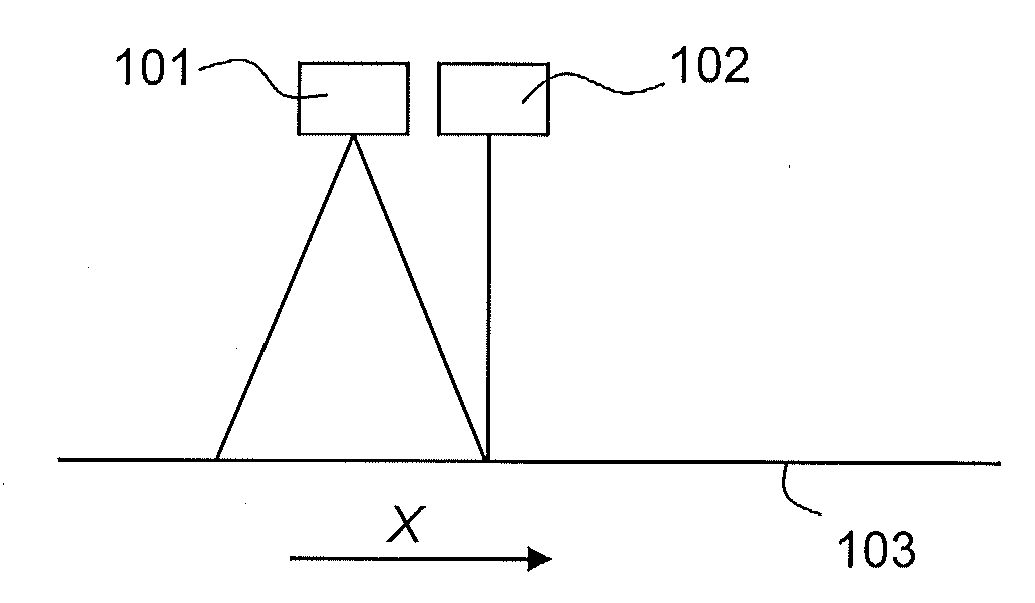Method for laser marking and laser marking system
a laser marking and laser marking technology, applied in the field of laser marking and laser marking system, can solve the problems of insufficient power, and insufficient laser marking power to achieve the effect of high speed and high resolution
- Summary
- Abstract
- Description
- Claims
- Application Information
AI Technical Summary
Benefits of technology
Problems solved by technology
Method used
Image
Examples
example 1
[0039]An area of 8*7 mm of a substrate was coated with ink A. The laser energy density was set to 1.4 and 2.0 J / cm2, respectively, and the power density of the IR halogen lamp was set to 0.79 W / cm2. The optical density was then measured versus IR exposure time for the different laser energy densities. The test results indicated that utilizing a laser energy density of 1.4 J / cm2 together with the IR energizing element ands optical density of 0.6 was obtained. This corresponds to the use of a background laser energy density of 2.6 J / cm2, i.e. a decrease of 46% of laser energy needed for marking.
[0040]Further, the test results indicated that utilizing a laser energy density of 2.0 J / cm2 together with the IR energizing element ands optical density of 0.75 was obtained. This corresponds to the use of a background laser energy density of 2.8 J / cm2, i.e. a decrease of 29% of laser energy needed for marking.
example 2
[0041]An area of 8*7 mm of a substrate was coated with ink B. The laser energy density was set to 0.38 and 0.6 J / cm2, respectively, and the power density of the IR halogen lamp was set to 0.79 W / cm2. The optical density was then measured versus IR exposure time for the different laser energy densities. The test results indicated that utilizing a laser energy density of 0.38 J / cm2 together with the IR energizing element ands optical density of 1.0 was obtained. This corresponds to the use of a background laser energy density of 0.6 J / cm2, i.e. a decrease of 36% of laser energy needed for marking.
[0042]Further, the test results indicated that utilizing a laser energy density of 0.6 J / cm2 together with the IR energizing element ands optical density of 2.2 was obtained. This corresponds to the use of a background laser energy density of 1.4 J / cm2, i.e. a decrease of 57% of laser energy needed for marking.
[0043]Although the present invention has been described with respect to a presently...
PUM
 Login to View More
Login to View More Abstract
Description
Claims
Application Information
 Login to View More
Login to View More - R&D
- Intellectual Property
- Life Sciences
- Materials
- Tech Scout
- Unparalleled Data Quality
- Higher Quality Content
- 60% Fewer Hallucinations
Browse by: Latest US Patents, China's latest patents, Technical Efficacy Thesaurus, Application Domain, Technology Topic, Popular Technical Reports.
© 2025 PatSnap. All rights reserved.Legal|Privacy policy|Modern Slavery Act Transparency Statement|Sitemap|About US| Contact US: help@patsnap.com


